
~::I originally published this review on The Headphone List. Now I wish to share it with my Head-Fi fellows::~
To learn more or purchase the Opus#2:
theBit (Audio-Opus)
MusicTeck
MusicTeck on Amazon
Here I am, on the very threshold between reality and absolute madness. Some would say we’ve already crossed it. I can’t argue with that sort of reasoning. I mean look at the evidence: Pinky, that delusional pervert from Head-Fi, writing for The Headphone List?! You may be asking, “What evil villain is responsible for this?” That, my good people, would be
Flinkenick. Cast thy blame appropriately.
Before I begin this, my first review for THL, perhaps a small introduction is in order. If you knew a little about me then you’d have something to cling to when the fear takes hold. My secret truths could be a beacon in the dark tumult that follows. So heed them well:
I am Pinky.
Awesome. Now that’s done, let’s get on with this.
I must give a hearty call of thanks to Andrew over at www.musicteck.com He let me purchase the Opus#2 for $1,000 in exchange for my honest review. And he did so BEFORE I joined THL. This was based solely on my Head-Fi reviews and my strangely earnest disposition.
Hmm… if you look at it from a different perspective, I’m thanking him for letting me give him lots of money. If I didn’t like this device so much, I might find some irony in that. But instead, I
am thanking him, from the bottom of my heart. Thanks Andrew!
Since early September, 2015, my everyday carry (EDC, for us knife folk) has been the Astell&Kern AK120II. I’ve tested numerous DAPs against this high watermark. None have conquered it. There are plenty I haven’t tested. DAPs I suspect would beat the AK in sound quality, if at least by a little.
The reason I’ve never upgraded, or even felt a strong urge to try those other DAPs, is I made myself a promise. I would only consider upgrading from the AK120II if a device gave me EVERYTHING the AK does, but also improves on sound quality and output power.
That means I’m looking for: The same storage capacity. Touchscreen. Great, bug-free UI. Highest quality build, with volume wheel. Duel-DAC balanced output. And an over-all strong product that isn’t plagued with QC issues. At or around $1K (same price I picked up the 120II for).
You can see why I never upgraded. That DAP did not exist.
Until now.
In fact, there may be three distinct players which meet most of my prerequisites. Each one new on the market and promising superior sound and output power: Sony WM1A, iBasso DX200, and theBit Opus#2.
With such devices swimming round me, I felt the itch. I felt it bad. The Sony looked REALLY good, but I loathed the notion of re-terminating all my balanced cables to 4.5mm. Using an adapter, while not a terrible option, is a cumbersome chore I’d rather avoid.
The DX200 was at the time (and still is, to be honest) too new to be sure of. Plus, it’s the one player out of the three which fails to match my AK in storage capacity.
That leaves the Opus. It meets all my requirements, uses the now prolific 2.5mm balanced output, and is the only DAP out of this lot to have a Twister6 review. His DX200 review will come soon enough, I’m sure. But at the time of this writing, all the cards came up Opus.
Another point which held a lot of weight with me is that I just reviewed the Opus#1, and felt sheer ecstasy under the glory of its radiance. It’s the only DAP I’ve heard that stands neck to neck, unflinching, before the auditory perfection of my AK120II. For the price the Opus#1 goes for now, it’s a MUST BUY if you’re in the market.
So with high hopes to billow my sails, I embarked on a search for a goodly price on the Opus#2.
With Andrew’s help, I found that price, and the Opus arrived around two weeks ago, on the 10th of February.

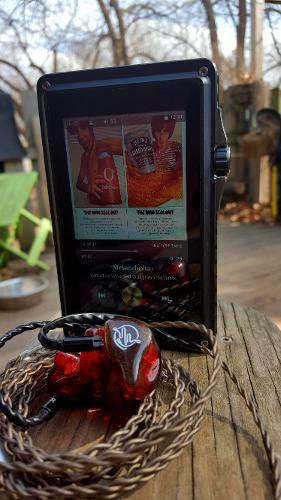
For those of you familiar with my work, I don’t cover the boxing/packaging. Not unless a gun’s to my head, or I’ve been offered erotic delights as an incentive. I’ll just say the box is nice, and everything was safe inside.
The first experiment that came to mind was to try and power the thing on. The battery was dead. Ok, no big deal. That’s not unusual. I plugged it into my 2-amp Samsung microUSB cable. But the screen didn’t come On, and there were no LEDs letting me know it was charging. So I freaked out, and hooked the player up to my PC’s USB port, using the supplied Opus cable. Still nothing. Did I fry the thing, using 2 amps of power? I gave it about 20 minutes of charge time before I tried again, and this time the Opus#2 booted up.
Phew!
I have since used that same 2-amp adapter and cable again, and it works just fine. Your options for charging this player are good and broad.
Boot-up is around 20-30 seconds (I didn’t time this, so don’t hold me to an exact count). Scanning a full internal storage and a full 128GB microSD takes forever. Fortunate for Pinky, I only ever use Browse By Folder on any DAP I use, and this doesn’t require the scan to be complete. You can find a song and start listening right away.
This might not be a big deal for you, either. Because the Opus#2 (and #1) has the world’s best Deep Sleep Mode. In fact, today was the first time I’ve powered it off since I got it. The battery can go something like 2 months in Sleep Mode, waking up with just a quick press of the button. There’s no re-scanning, coming out of Sleep Mode, so this doesn’t have to cause undue stress on your life.
Don’t ask me why, but I love volume wheels. I have a dangerous fascination with them. Now there are so many good options in the wild, I won’t buy a DAP without one. My favorite player, in terms of physical build and aesthetics, might be the Cayin i5. The massive knob at the top has a lot to do with that. The Opus#2 may possess my second-favorite wheel. It’s certainly sturdier than the AK, which wobbled some and turned a little too easily. I like some resistance. It makes the volume less likely to change by accident.

Button arrangement could be better, though to be fair, I’m not sure how. All I know is, due to the wide dimensions of the Opus, it sits awkward in the hand, and from time-to-time I will unintentionally hit the track back on the side. I shall not mark this against the Opus, because with amperage comes size. It’s what I wanted, I keep telling myself. Still, next to the AK120II, it does seem massive and ungainly.
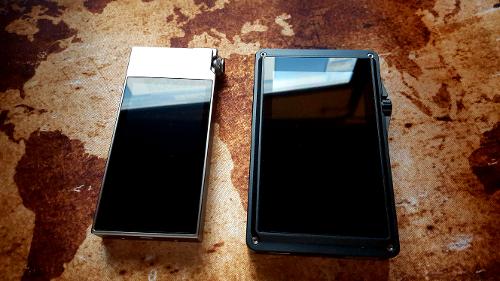
The screen is a 4” IPS. It’s good, but certainly no AMOLED, like my Astell&Kern. In comparison, the Opus looks washed out. But the image is clear and detailed, and does its job.
Coming from the lap of luxury in my old DAP, I am accustomed to only the prettiest of things. The Opus is not exactly sexy. It dresses less for the ball and more for a military assembly. That’s not to say it’s without artistry or elegance. With a full aluminum chassis, and tight, strong assembly, the Opus#2 is utterly top of the line in build. The feel of the thing leaves no question as to its status.
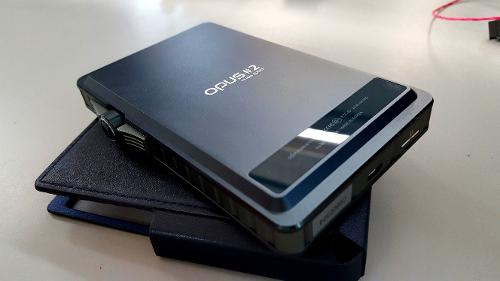
My biggest complaint with the Opus#2 must be operating speed. Just switching on the screen takes a second longer than it should. Regular UI interaction isn’t terrible, but there is a sense of lag that I just don’t experience with the Astell&Kern.
The GUI is quite good. Minimalistic, and classy. It’s the best I’ve seen apart from the AK. Much better than Cayin, or FiiO’s X7. This is on firmware v1.00.03, before they implement the full Andoid OS, with App Store and streaming (something they assure us is coming). Pinky is not looking forward to that. I’ve preached enough in the past, from my high and noble pulpit, on the sins of smartphoning our audio players. I’ve gone on and on about how a DAP should be a standalone device, and a smartphone a pocket PC, and keep the two ideologies as separate as possible. For the sake of the sound! Keep them separate! I don’t have it in me to kick that up right now. ho ho! Don’t relax too much, though! I’m sure I’ll get worked up about it again, sooner or later. After all, it is the gravest plight facing our species today.
Good man Andrew tells me the case which is included with this package is genuine leather. I guess it could be, though I wouldn’t have thought so. It doesn’t look like real leather. Nor does it smell like it. When I lick the hide, I do not taste the soul of the creature it came from. It’s been treated so thoroughly it’s indistinguishable from synthetic. Either way, the case is neatly wrought, and fits like a love glove on a rhino.
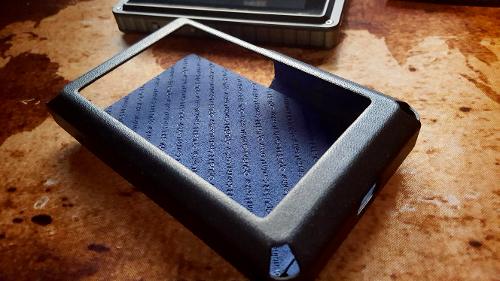
So far, I’ve experienced only one crash. It was a hard lock. The screen wouldn’t turn on, and none of the buttons worked. I did not panic because just recently my Samsung Galaxy S6 had a similar crash, where even the LED light remained dead when I plugged it into the charger. I freaked the ****** out! Before I gave up all hope, though, I consulted the Interweb and found out how to perform a hard reset. This also worked for the Opus#2. Just a few seconds holding down Power+Track-Down and the device rebooted.
Right. Yes. I say that about covers the boring ****. On to SOUND!
Sabre DACs are a perilous proposition to anyone who loathes an overly bright signature. If you are my kin, your heart belongs to a warmer profile. Sabre DACs can be thin, harsh, and unnaturally metallic-sounding. I am not a fan of the FiiO X7 for this reason, though it is not the worst offender. Yet when they are handled right, Sabre truly exemplifies neutral, transparent, high-resolution rendering while maintaining a full, dynamic sound that comes off wholly organic. My Audio-GD NFB-28 is one such marvel. I would never call that thin or brittle.
The Opus#2 is Sabre done right.

It’s actually ever-so-slightly on the warm side. Or maybe I’ve been tricked into thinking that because it is so smooth, and with such meaty bass slam. The Opus#2 presents a highly musical, weighty sound that pours out of your headphones like melted butter. It is resolving to the highest degree, detailed like a mofo, with a soundstage that matches or bests everything I’ve tested thus far. The Opus does all this while being the most natural and realistic DAP I’ve had the pleasure of hearing.
The Astell&Kern AK120II shall be my main comparison, since I have it on-hand, and specs and pricing put these in the same league. Not to mention, it’s the only comparison that matters to me, since the Opus is meant to be my upgrade. But worry not, I’ll throw in some quick thoughts on other good music players, for perspective.

During my A/B comparisons, where I use a source switcher to give me split-second access to multiple DAPs, I found the Opus and AK to sound freakishly close to each other. The Opus#2 is clearer by a hair. There’s a touch more treble and dynamism. Vocals are forward on the AK, and more neutral on the Opus. The AK120II is warmer, which seems like a veil compared to the clarity of the Opus#2. But really, the difference is absurdly small. Same note weight. Same thick, full sound. Even soundstage was equal. I tried my amazing 24Bit Beatles re-masters, and even the brilliant binaural record, SESSIONS FROM THE 17TH WARD by Amber Rubarth. There was no track that delivered a winner between the AK120II and Opus#2. The staging was equally grand. Going from A to B, and back to A, all the instruments stayed put, no matter where they were on the plane. Only the vocals moved forward or back a step.
This was via the 3.5mm single-ended output. I don’t have an A/B switcher that runs balanced signal. Maybe I should build one. However, when I engaged in the more traditional fashion of testing—unplugging from one device and plugging into another— comparing the two’s balanced output, I felt the Opus was indeed a little wider. I also felt the Opus might have greater depth and separation. But since I couldn’t verify this with a switcher, I suggest you take that with a pinch of salt.

Just as I discovered with the Opus#1, that extra treble sparkle makes this a better pairing for very warm headphones, like my 64Audio ADEL U12. It sounds a bit airier and brighter than it does on the AK120II, without losing any of its richness and bass. Anyone who’s heard the U12 knows that can only be a good thing. This pairing is supernatural, sounding bigger and more spacious than any IEM has a right to sound. Both DAP and IEM are paradigms of the satiny, refined class of audio. Lana Del Ray’s Black Beauty from ULTRAVIOLENCE is a study in lushness. Together, the Opus>U12 make miracles happen. Especially with a little EQ, which has a much better effect on the Opus than it does on my AK. I’m deeply impressed by the results. A few Db in the Presence Region and the U12 becomes a whole new IEM.
The Rhapsodio Solar is hungry and angry next to the U12. It’s quick, sharp, and clear. The Opus gives it all the energy it could ever want, driving that thunderous bass and sparkly treble to their fullest. Solar has never sounded wider than it does on the Opus#2 in balanced. The notes are clean and thick, the details intricate. Imaging is holographic, immersing you entirely in a well-mastered extravaganza, like Radiohead’s new album, A MOON SHAPED POOL. With the Opus, Solar enunciates a perfectly accurate picture with layers of depth.

One of my favorite headphones right now is the Meze 99 Classics. It’s also the newest, so that may have something to do with it. Whatever the psychology, this thing cannot sound bad on anything. It’s so well tuned. The Opus, being the perfect lord of neutral, exemplifies all the 99C’s best attributes. Where Meze usually rumbles deep, now it does so with control and authority. Where the treble pranced and twinkled, now it unleashes secret stores of passion for the old dance. The vocals have never sounded more crystalline, while keeping their rapturous warmth. There is majesty in this pairing of which I cannot get enough. Listening to the rich acoustics of Nirvana Unplugged gives Pinky the chills.



Sennheiser’s collaboration with Massdrop, the HD6XX, also known as the Massdrop limited edition Sennheiser HD650, gets loud enough on Medium Gain. That’s listening to a modern record. If you put on original masters of classic rock, you’ll need to turn on High Gain. These 300 Ohm headphones actually sound complete on the Opus. More or less. I mean, there is very little improvement from my desktop DAC/Amp, the Audio-GD NFB-28. From the Opus, the HD6XX is smooth and warm. It’s rich, with a delicate, resolving render. There’s a big, live feel to the music. The HD6XX puts out a full, wholesome sound from the Opus#2. And that’s in single-ended! I want to hear these things from the DAP’s balanced output. Alas! I have yet to build all the right cable and adapters for that endeavor.

The Audeze LCD-2.2 Fazor is heavenly with the Opus#2. This is the first time I’ve even attempted to drive these from a mobile player. WOW! Liquid sonics flowing forth with life-changing bass, transparent vocals, and treble you can practically taste. The veil is parted, and you stand exposed before The Soul of Sound and Melody. I have no complaints about what I hear. Like the HD6XX, these sound complete, lacking in nothing. They do not have that underpowered sound full-size headphones get when there’s just not enough juice to fill them out properly. The AK120II does a far less impressive job. My LCD-2 gets loud enough on the AK, and sounds pretty good, but it lacks the weight and dynamics the Opus brings to the field.
Don’t get me wrong, there is a serious step up in quality from my desktop system: NFB-28>Balanced Output>Silver-Gold Alloy cable>LCD-2.2F. No question. However, from the Opus, using the stock, single-ended cable, the sound is still utterly enthralling. One does not feel the loss of the better system while swept up in this kind of audio.
If this isn’t the most inappropriate place in the review, let me throw together some other comparisons. They are from memory, but since I wrote reviews on all of them, and I still have the AK as a cornerstone by which to reference each, you don’t need to completely dismiss what follows.
FiiO X7 w/AM1 Module: Brighter. Thinner. Less dynamic. Weaker bass. Slightly smaller soundstage. Quite revealing and transparent, but not on the same level as Opus#2.
Cayin i5: Warmer. Even bigger bass. Thicker sound. Less detailed, with a slight veil. Not as refined. Noticeably smaller soundstage. Nowhere near as clear or transparent as Opus#2.
Opus#1: Maybe a smidgen brighter. Note weight is a tad thinner. Dynamics are about the same. Details and transparency are not far off. Not as refined. Less smooth and organic. Smaller soundstage.
Well there it is! Look at the mess I’ve made. Try and make sense of that, you grubby peasants!
The Opus#2 by theBit is wildly impressive in a lot of ways. I was a bit disappointed to see that it did not absolutely shatter my AK120II. This shouldn’t have surprised me, as I’ve said many times before how the AK delivers a faultless sound. It’s hard to blow away something without obvious failings. Nonetheless, the Opus#2 is an upgrade in a number of ways, without forcing me backwards on a single point. That’s what I wanted, and that’s what the Opus gives me. It’s a pocket-size DAP mighty enough to make any reasonably efficient full-size headphone sound complete. My TOTL IEMs have opened up to their fullest potential. This little device gives my desktop DAC a run for its money. Well… they do share a lot of the same components. But still, that’s no mean feat.
I’m sorry I can’t compare the Opus#2 against more players in this price range, or above. If I get the opportunity to test them out, I shall update the review. In the meanwhile, I’m going to enjoy listening to the best-sounding DAP I’ve heard to date.
-~::
Pinky_Powers::~-
The Opus#2 by theBit
Native DSD Playback
32bit / 384kHz High Resolution Sound
4” Touch display (IPS panel)
SABRE32 ES9018K2M x 2EA Dual DAC
ARM Cortex-A9 1.4GHz, Quad-Core CPU DDR3 1GB
Internal Memory 128GB (External Micro SDcard Upto 200GB)
Full Metal Body (Aluminum CNC)
WI-FI : 802.11 b/g/n (2.4GHz)
Bluetooth V4.0(A2DP, AVRCP)
Ultra Power Saving Mode

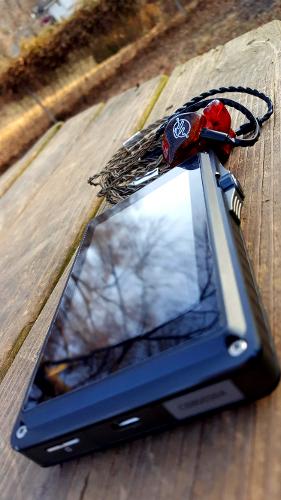


















































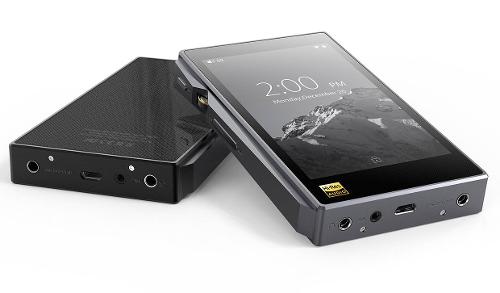











































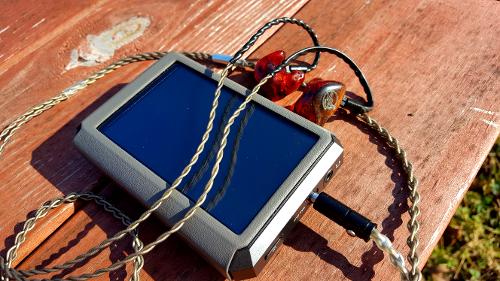
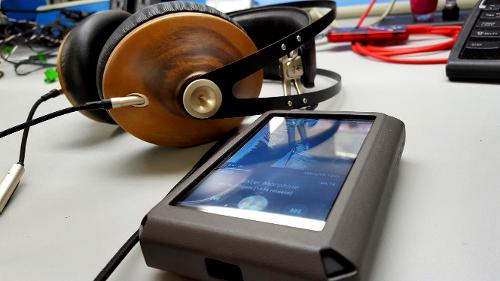

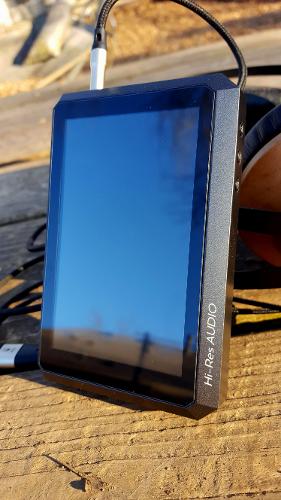


































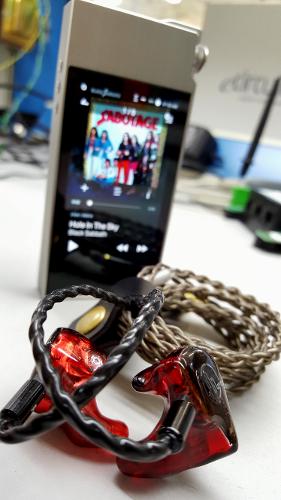









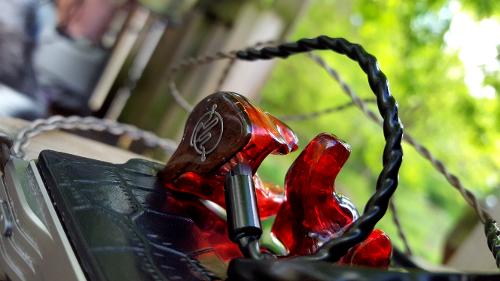
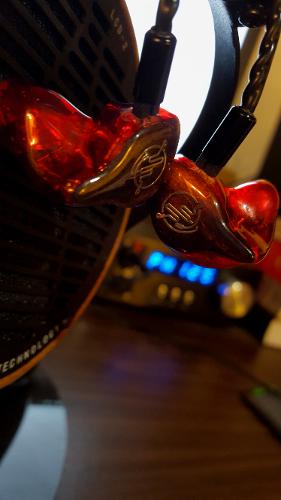






























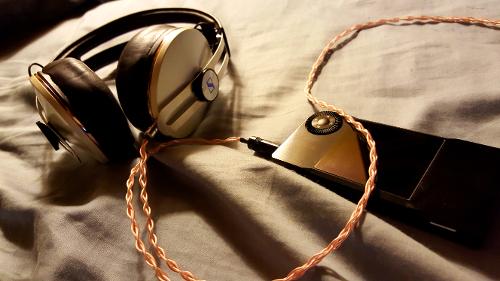

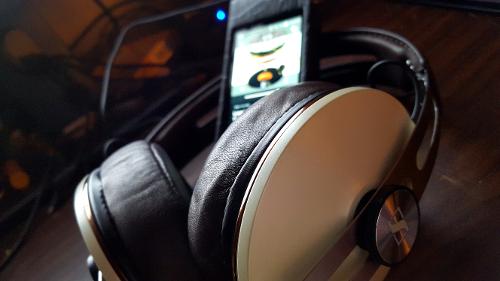















































Nice review.